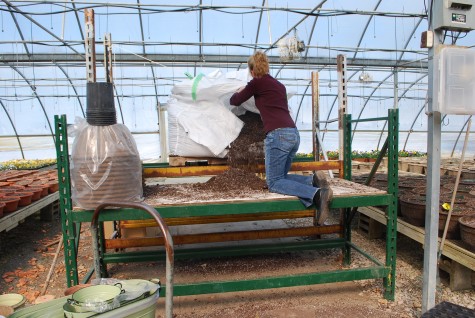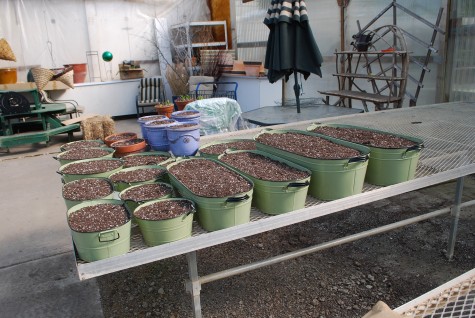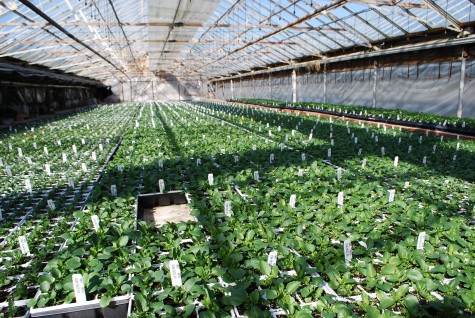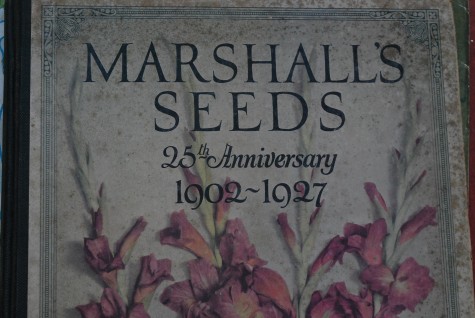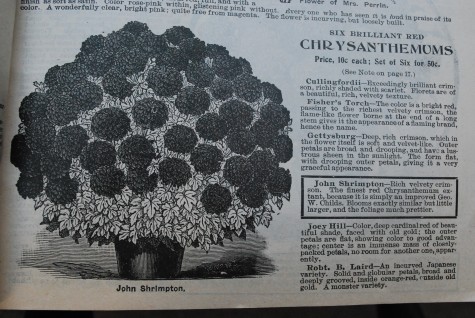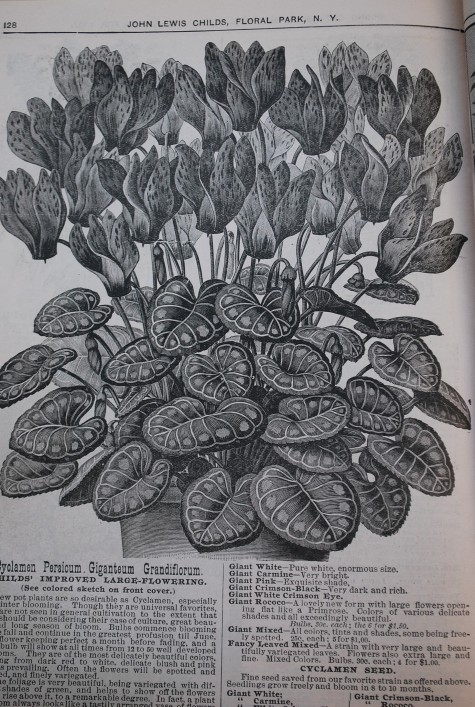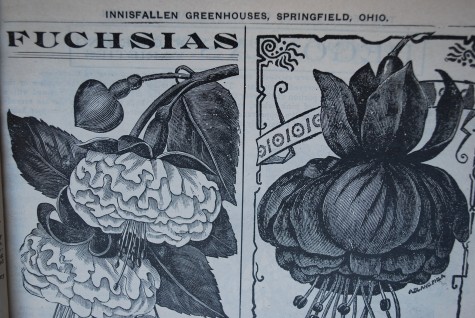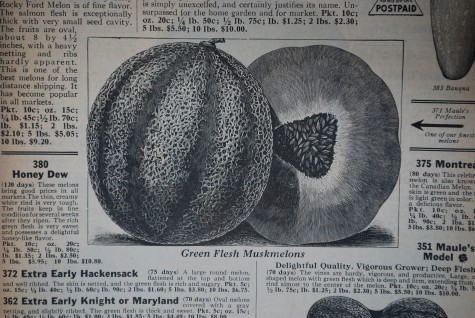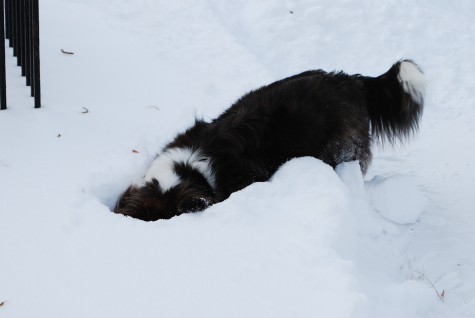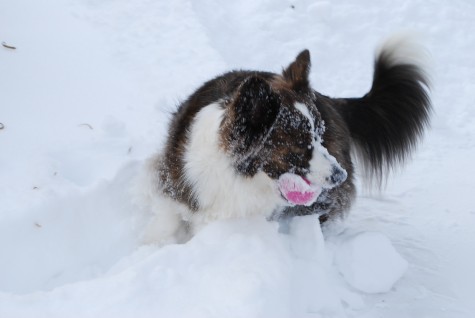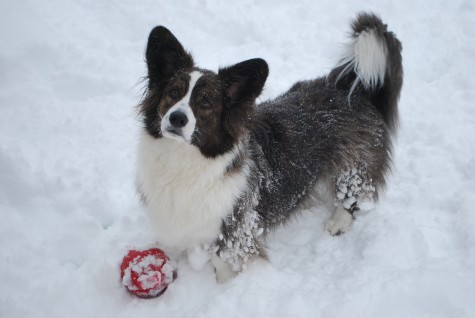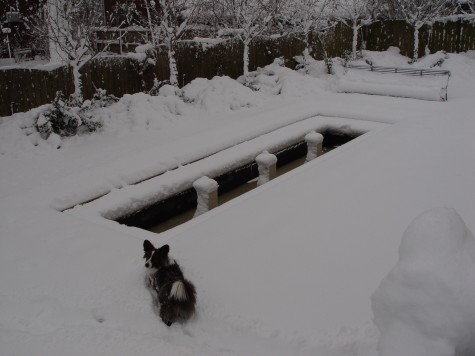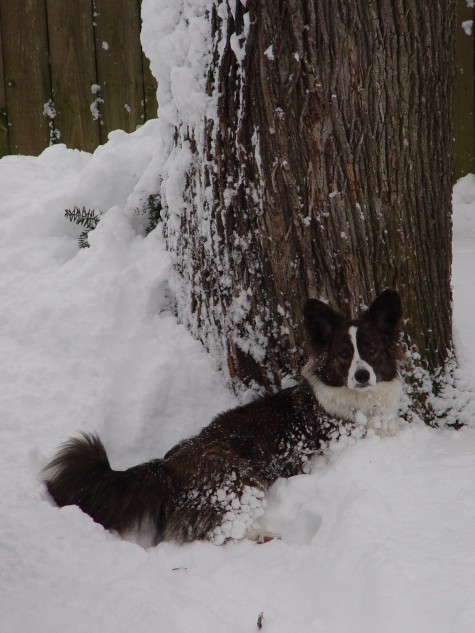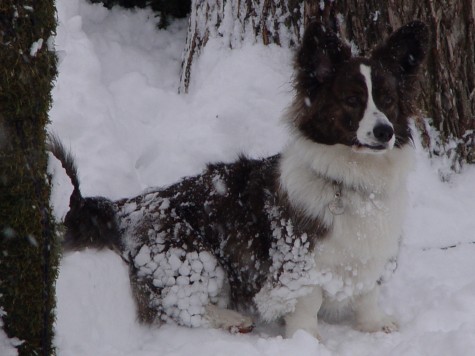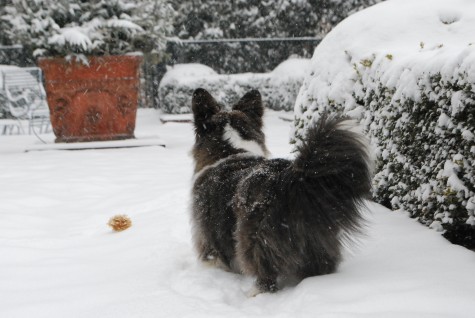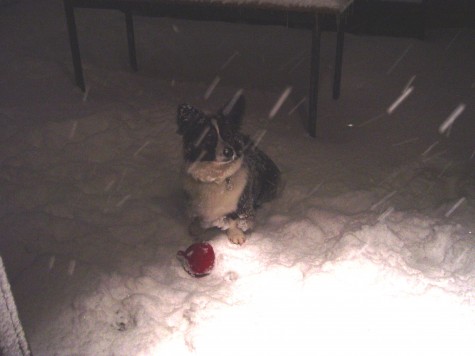I know I made much this past week about planting a more beautifully designed hanging basket. The challenge was such, I have the troubled dreams to prove it. All of the notes I made this past summer inexplicably disappeared. The lesson here-any idea, phrase, phone number, concept or design that you really need-write it down, and insure its safekeeping. Notes and notebooks, scrapbooks, file folders, magazine clippings-all of these are a good idea. Some ideas occur way ahead of their time. Keeping them written down, visually documented, and readily available is the best backup to insure that what is close to you heart gets a hearing when the time is right. Well, the time isn’t really right yet, but I was ready anyway.
I wanted to be past the dreams stage. It was time to put my show on the road. I drove out to Bogie Lake Greenhouse yesterday with Pam, and some containers in tow. I had an idea to plant some 50 containers for spring, in addition to the hanging baskets of my dreams. Ambitious, yes. But the big fact of the matter is, as Coach John Wooden once said, “It’s what you learn after you know it all that counts.” My big ideas got a dressing down. I am used to planting at the shop; I have already sorted through everything that Mark has available, and have at hand the plants that strike my fancy. This is a highly edited version of his greenhouse. Many of them are in color by the time I get them-I rarely buy plants from a list-I buy what I see, and like. Pam got right to work-she had all of the containers filled in no time. I was cruising the greenhouse with Mark, when reality began to sink in.
Spring plants in mid March are tiny green blobs-a few roots, and not much leaf to speak of on top. I faced an ocean of violas and pansies-all green. They are just where they need to be, perfectly timed-to be perfect in a month. I don’t know about you, but great color combinations in spring pots can be tough to achieve. The blues, lavenders, violets and red violets in pansies don’t always go together. Red violet pansies look great with red ornamental kale-dark purple pansies go blah. It became apparent that I would need to rely on my memory of color, my memory of the colors in the various mixes-or the notes that I could not find. If I was thinking I would have mature plants in color from which I could design-I thought wrong.
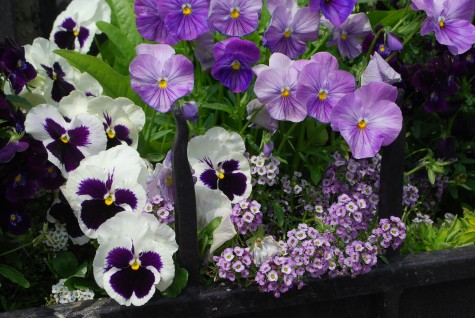 You can see from this picture that all of the purple in question has a decidedly red-violet cast. Do I know the names of these pansy and viola cultivars-no. Even when I did manage to match a cultivar name to a picture in a seed catalogue, I did not feel one bit better. Color pictures in a catalogue may give a feeling for a color-or not.
You can see from this picture that all of the purple in question has a decidedly red-violet cast. Do I know the names of these pansy and viola cultivars-no. Even when I did manage to match a cultivar name to a picture in a seed catalogue, I did not feel one bit better. Color pictures in a catalogue may give a feeling for a color-or not.
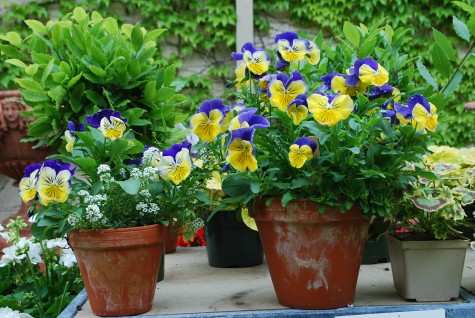 The purple is this bicolor pansy is not at all red violet. It has a heliotrope blue cast, to my eye. Red-violet alyssum in this pot would make me wince. Citron alyssum, which has a decidedly cream yellow cast, would have worked better than the white alyssum you see here.
The purple is this bicolor pansy is not at all red violet. It has a heliotrope blue cast, to my eye. Red-violet alyssum in this pot would make me wince. Citron alyssum, which has a decidedly cream yellow cast, would have worked better than the white alyssum you see here.
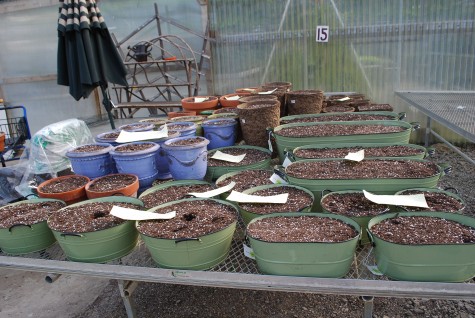 So I did what I could-all of the schemes came from my head and memory. Pam planted pairs of pots with a variety of spring annuals including pansies, violas, phlox, angelina, osterospermums and so on-and we’ll find out later if I can design in the dark. I didn’t even approach the hanging basket planting project-I see I have to plan them on paper. The time to plan combinations is at the height of the season-when color, texture and mature size is all right there to be seen.
So I did what I could-all of the schemes came from my head and memory. Pam planted pairs of pots with a variety of spring annuals including pansies, violas, phlox, angelina, osterospermums and so on-and we’ll find out later if I can design in the dark. I didn’t even approach the hanging basket planting project-I see I have to plan them on paper. The time to plan combinations is at the height of the season-when color, texture and mature size is all right there to be seen.
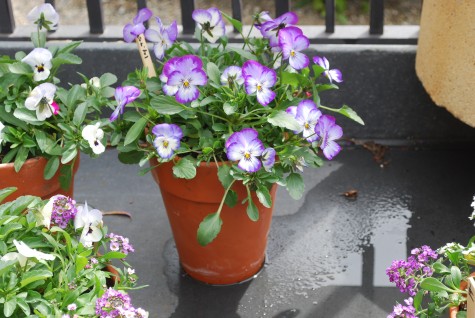
I have new resolve to photograph all of the flower cultivars I like to use-from the start of the season to the close. I will have then a catalogue of my own making, so I can plant green, if need me. We’ll see how far I get with that.
 Though these baskets are lush and well-grown, I have something different in mind. To that end, I’ll spend some time planning, before I plant.
Though these baskets are lush and well-grown, I have something different in mind. To that end, I’ll spend some time planning, before I plant.
